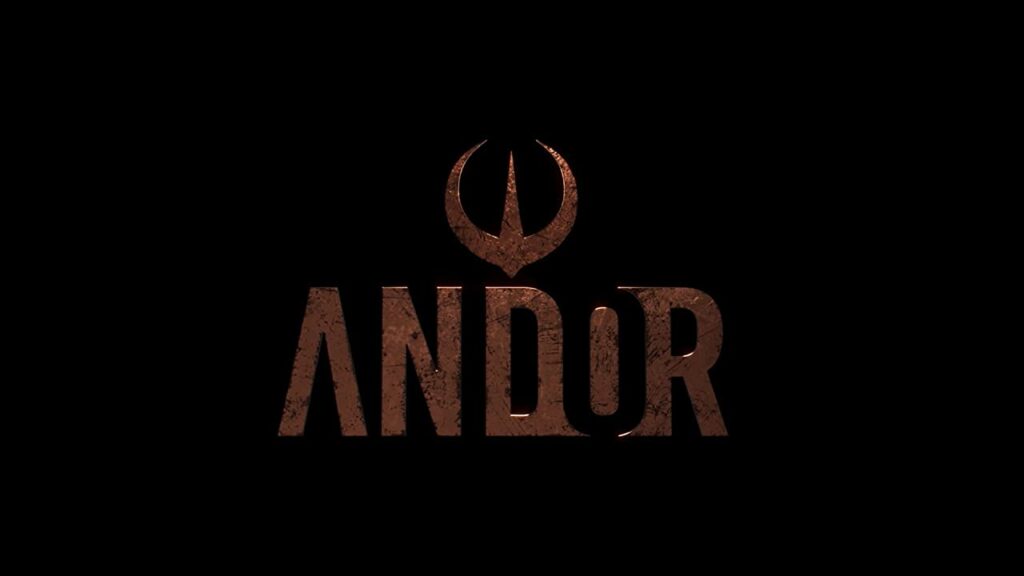
Andor Pushes This Franchise In Unique Directions
Perhaps the most notable thing about Andor is how immediately it establishes itself as different from the usual Star Wars fare. What little I’ve seen of more recent Mandalorian projects suggests this isn’t an isolated affair, but it is to me.
The morally gray nature of the plot is, of course, significant and noticeable. Our hero kills someone, in cold blood, in the first few scenes. Our villains are also given humanizing moments; some don’t even seem aware of how evil the Empire is. But that’s not the full scope of it. Andor, down to the core, feels like a fresh take on this universe.
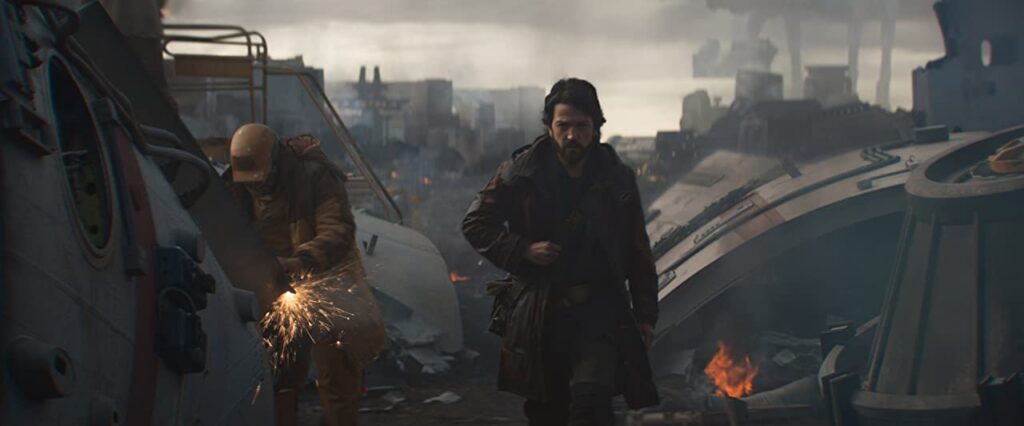
This Series Is Tonally Subversive In So Many Ways
For one, death is acknowledged in blaster fights to be horrific. Not since Finn had a bloody hand laid across his mask in The Force Awakens can I think of a time it’s been treated this way. Clones, Stormtroopers, and especially droids (despite being sentient) are “disposable.” Combatants are often criminals or bounty hunters or aliens (which has so many layers of messed up it’s worth a dissertation, but we don’t have the time), and the plot doesn’t stop to examine that. But Andor steps in that direction; Andor takes the generic “bad guys in the bar the hero beats up” and makes their murder a murder. It may still pull back on examining the full scope of that trope’s assumptions, but it at least acknowledges the reality of it enough to use it as a springboard for a whole plot. It’s practically a crime thriller in those first three episodes: a low-level crime family member killing the wrong person would have almost the same framework. Sure, the plot drifts toward galaxy-level stakes, but it’s still notable for starting so small scale.

Andor Is More Of A Personal Story Than Expected
And that’s not all the tropes shattered. Star Wars has had sex and sexuality highlighted in various ways before this. Princess Leia’s outfit during Return of the Jedi is a famous/infamous example. But this show has one of its first scenes in a brothel. A later scene damn near becomes a sex scene—and definitely implies one. Lots of it’s not managed well, but it’s still there. It still happened in a Star Wars show.
And these moments, taken as a whole, have an interesting effect on the show’s “vibe,” for lack of a better way to describe the impression it gave me. There’s a level of media homogeneity inherent to going bleaker and more naturalistic, and Andor doesn’t escape it. Case in point: its approach to worldbuilding. Seeing the citizens of a classic sand planet living their lives, having jobs, and getting into romantic relationships, made everything more alive, but also more like The Wheel of Time, The Witcher, or even shows like Ms. Marvel and Hawkeye. Not everyone is hopping from adventure to adventure every day or every hour; there’s a grounded sense of reality that’s not been part of Star Wars much at all. Blasphemous, I know, but it often felt like the planets Anakin and Luke visited were gimmicky theme parks with one or two unique geographical/architectural features. Some may criticize Andor for shrinking the majesty, the mythological framework, and the almost sandbox nature of the Star Wars galaxy by doing this—and they’re not wrong exactly—but if we’re going to keep having new series in this universe (and Disney is absolutely not going to stop), then they needed to go granular. People are already getting close to burning out on this IP—this is the saving throw required in the franchise game. And Andor proves that, given the right writing and framework, you can do dramas, thrillers, mysteries, and political satire well without revolving the plot around Jedi and Sith. New writers, actors, and other dedicated creatives and technicians can make this galaxy their own. Marvel did something similar, and sometimes it worked really well.
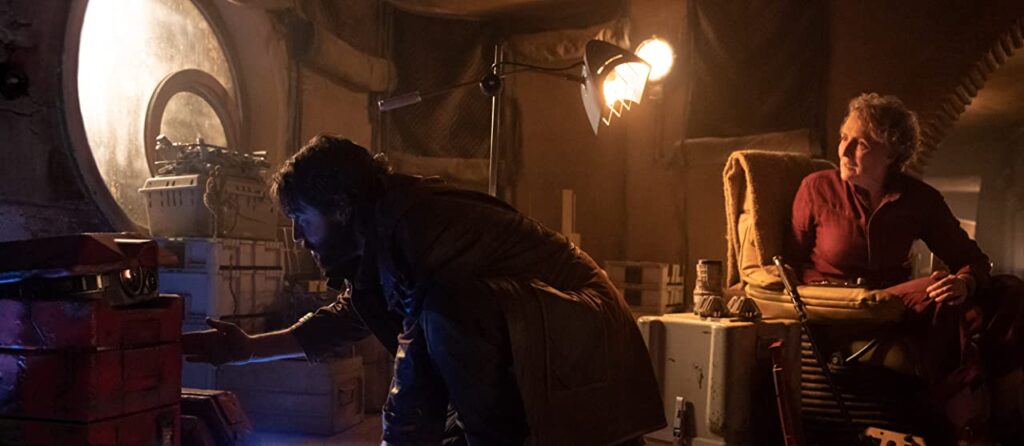
This Is A Natural Evolution For Star Wars To Follow
But how is the actual show Andor outside the broader scope implications? Well, it’s good. It’s very watchable. Our main character, Cassian (played by Diego Luna), is an archetypical character with an interesting past. He feels like a real feature of this world. It’s funny how often he owes money to someone—and it’s a great detail that he’s always trying to pay it back. The interactions between him and the rest of the characters give that touted impression of history and community. A large part of the plot happening because of his connections to Bix (played by Adria Arjona) and Timm (played by James McArdle) helps this immensely. And, though I stopped at episode three, the budding mentorship connection between Cassian and Luthen (played by Stellan Skarsgård) already has great promise and was fun to watch. These moments are still often conveyed through Star War’s pulpy and broad characterization, as well as an above-average density of technobabble, but it keeps the plot moving and the pace at sufficient tempo.
What grabbed me, though, what really cemented this as worth the time to watch, was the broad-scale stuff—and how it’s treated with logistical thought and mundane corruption and conflict. Any scene involving the Empire (and its affiliated companies and groups) was electric. Top-tier dialog and delightful layers of societal/political commentary are put through the strainer of Star Wars. The scenes between Linus Mosk (played by Alex Ferns) and Syril Karn (played by Kyle Soller) instantly got my attention. In minutes, the writers gave them more personality than most of Star Wars’, Marvel’s, or Doctor Who’s rogues gallery.
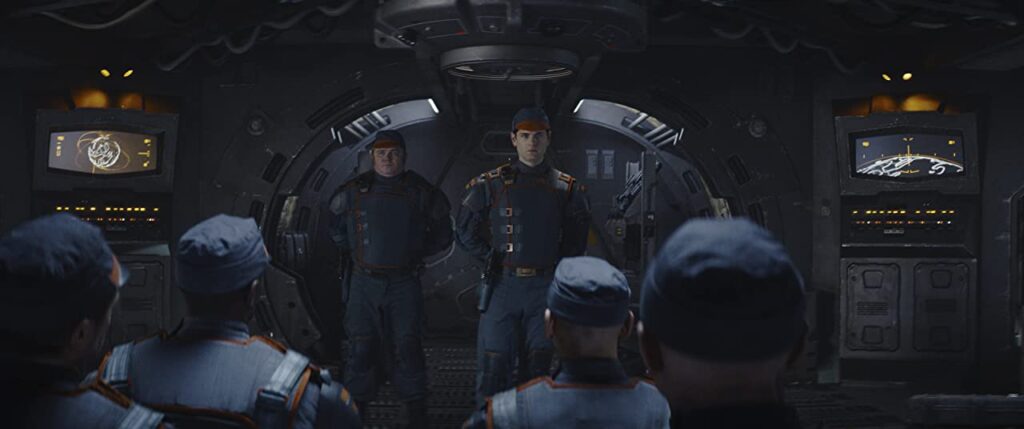
The Early Villians In Andor Are Fantastic To Watch
And some of the best scenes are when this all coincides with the “war” of Star Wars. The massive battles of good versus evil, clones against droids, large-scale space battles with fighters darting around, it’s all fun. But seeing skirmishes between known characters on both sides using guerrilla tactics is simply more engaging emotionally; it makes each encounter a treat. Star Wars weapons wielded with weight and limitations are oddly fascinating to witness. It’s one reason I liked The Bad Batch; it’s why Kylo versus Ray in The Force Awakens worked so well. It’s visceral. It’s tactile. There are civilian casualties, people going numb, and tense battlefield panic.
It’s also good writing. Andor uses battles as storytelling, not just attention-grabbing spectacle. The scene where Maarva (played by Fiona Shaw) is taunting her captors while the entire community uses an agreed-upon warning system says so much about everything and everyone in that part of the story.
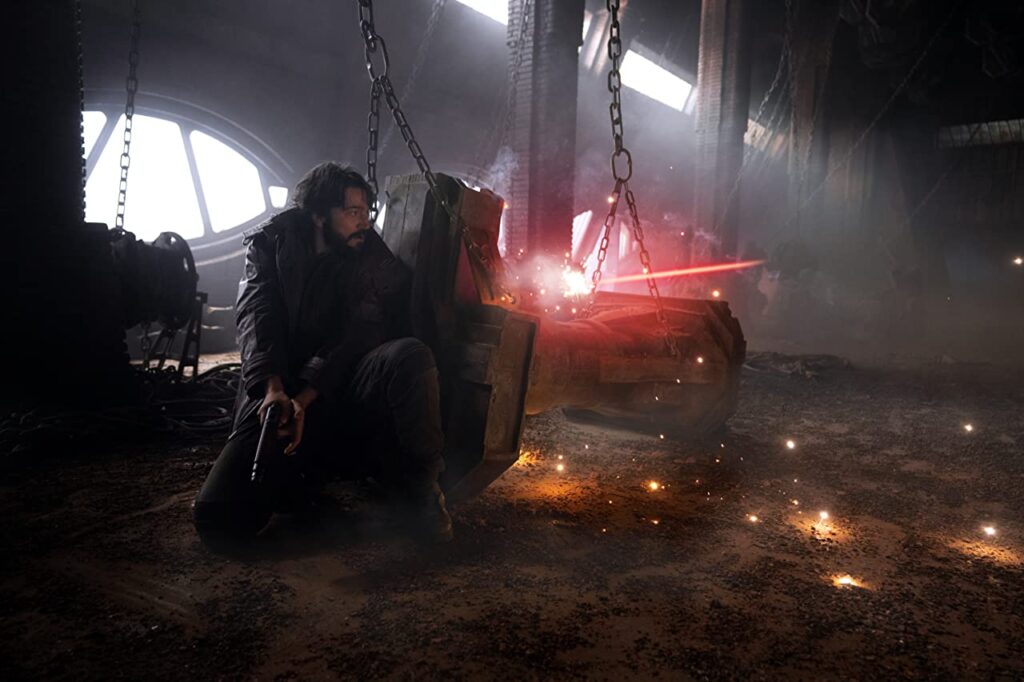
More Battles In Star Wars Should Flow Like These
And then there’s the absolute artistic gamble that’s the Kenari plotline. There are a lot of real-world parallels to unpack, considering it’s a planet rendered unlivable because of mining efforts—but I am not the right writer to cover that. I can focus on how they do entire scenes without translated dialog. The plot in these frequent sections is communicated through implication, body language, and familiar storytelling cues. And, somehow, it mostly works. I could follow the general structure of what was happening. I’m sure I missed something, but Andor being willing to trust its audience was appreciated.
In my humble opinion, this show has enough positives to be a triumph. I loved that I couldn’t predict every plot point. I loved feeling like these planets were living cultures and could imagine a little of what life must be like there. Yes, some of the plot is slower, and the dialog has the occasionally questionable choice—but I was engaged and excited to see what each new episode would bring. The writing is layered and often naturalistic. It’s got the special effects, camera work, and solid acting to be transportive. And it lets its plot points scale gradually. If you want bombastic and operatic Star Wars with lightsabers and Force lightning, this is not the show for you. But for those willing to take the chance, you’re in for a treat.

Possibly Related Posts:
